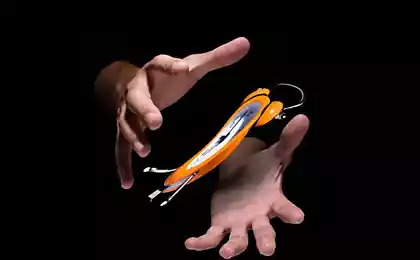244
Researchers explain why global warming is slowing down
The slowdown in global warming in the first decade of the twenty-first century is best explained by what is happening in the ocean – and not in the Pacific, as previously thought, but in the Atlantic and South Arctic. This is evidenced by the results of a study conducted by Chinese scientists, which is described in the pages of the journal Science.
Xianyao Chen and Ka-Kit Tung looked at data from measurement buoys, oceanographic sensors that can move up and down in the water column, and tracked how heat moves in the oceans. It turns out that at the beginning of the century, due to the increase in salinity, the excess heat from the surface of the water “went” to a great depth (up to one and a half kilometers). And this is no accident: the salinity of the Atlantic and Southern Arctic oceans changes regularly, cycles of 25-30 years. After the previous “hot” phase came the turn of cooling, says Ka-Kit Tun. The cycle begins when saltier (and thicker) water on the surface of the North Atlantic begins to “press” on the deep waters, which quickly transfers heat “inside” the ocean. The record salinity of surface waters in the 2000s coincided with warming temperatures in the bottom, said Thun. According to oceanologists, the cold years 1945-1975, when the Earth even feared a new ice age, fell just in time for the previous cycle of ocean cooling. And the rapid warming in the 1970s and 1990s was about 50 percent due to global warming and another 50 percent due to the natural Atlantic cycle. If this hypothesis is correct, then the relatively cool period will last another 10-15 years, and then the powerful global warming will resume. However, other processes on the surface of the planet threaten to disrupt the natural cycle. Fresh water from the melting ice of the Arctic Ocean enters the North Atlantic and changes its salinity. Source: Energy-fresh.ru
Source: /users/1617
Xianyao Chen and Ka-Kit Tung looked at data from measurement buoys, oceanographic sensors that can move up and down in the water column, and tracked how heat moves in the oceans. It turns out that at the beginning of the century, due to the increase in salinity, the excess heat from the surface of the water “went” to a great depth (up to one and a half kilometers). And this is no accident: the salinity of the Atlantic and Southern Arctic oceans changes regularly, cycles of 25-30 years. After the previous “hot” phase came the turn of cooling, says Ka-Kit Tun. The cycle begins when saltier (and thicker) water on the surface of the North Atlantic begins to “press” on the deep waters, which quickly transfers heat “inside” the ocean. The record salinity of surface waters in the 2000s coincided with warming temperatures in the bottom, said Thun. According to oceanologists, the cold years 1945-1975, when the Earth even feared a new ice age, fell just in time for the previous cycle of ocean cooling. And the rapid warming in the 1970s and 1990s was about 50 percent due to global warming and another 50 percent due to the natural Atlantic cycle. If this hypothesis is correct, then the relatively cool period will last another 10-15 years, and then the powerful global warming will resume. However, other processes on the surface of the planet threaten to disrupt the natural cycle. Fresh water from the melting ice of the Arctic Ocean enters the North Atlantic and changes its salinity. Source: Energy-fresh.ru
Source: /users/1617
Milan is a city with hundreds of attractions
Environmentalists from Romania, Ukraine and Moldova conducting research in the districts of Cantemir and Cahul























